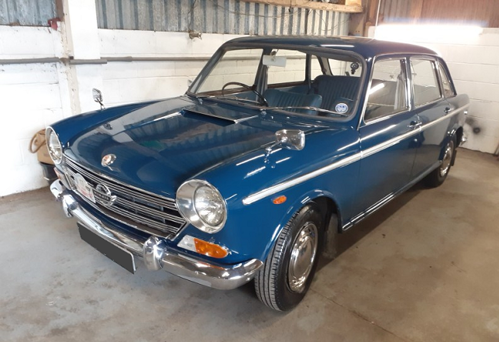RARER THAN RARE - THE MORRIS 1800S MK. II
13 January 2025
The year is 1970, and your criteria for a new car are: room for five reasonably sized adults, a fair turn of speed and front-wheel-drive. It must also be built in the UK, which immediately rules out the Citroën D Super, Renault 16TS, or Saab 99. In fact, your sole British option is the BLMC 1800S ‘Landcrab’.

The original Austin 1800 debuted in 1964 and became Car Of The Year 1965. Morris and Wolseley versions followed in 1966 and 1967, respectively. In May 1968, the recently formed British Leyland Motor Corporation introduced the Austin and Morris Mk. II (there would be no Wolseley 18/85 Mk. II until 1969) with a more powerful 90bhp engine with larger wheels, new grilles and taillights and the options of power steering and automatic transmission.
However, some drivers still craved more performance. A Riley-badged Landcrab was evaluated but never entered production, and instead, BLMC introduced the Morris 1800S. There are now believed to be just 11 survivors on the road and https://www.cherishedclassiccars.com/ recently sold this Teal Blue example.
The initial price of the 1800S was £1056 5s - £57 10s more than the standard models. Daniel Richmond of Downton Engineering had previously offered a £146 Stage 2 conversion of the Landcrab, and he created the high-compression cylinder head for the 1800S. There were also twin SU carburettors, larger disc brakes, and a three-branch exhaust manifold, resulting in a near 100 mph top speed. Meanwhile, corporate politics dictated there would not be an Austin or a Wolseley S until 1969.
Motor thought the 1800S “popular with those who wanted to borrow a quick comfortable car to get safely through bad conditions because the traction is extremely good in ice and snow”. Car described the Morris as “clearly a car that anyone with £1000 or so to spend should think about very seriously”. Autocar wrote: “What it sets out to do is to offer a fast, spacious and comfortable family saloon capable of covering very great distances easily and allowing the occupants to get out fresh and uncrumpled”.
British Leyland discontinued the 1.8-litre S with the launch of the third-generation Landcrab, which had the option of a 2.2-litre six-cylinder engine. The S deserves to be recalled as one of the most intriguing ‘Q Cars’ of its generation; as the brochure put it, “Designed for enthusiasts”.
With thanks to https://www.cherishedclassiccars.com/ and permission to use the image in this blog.
